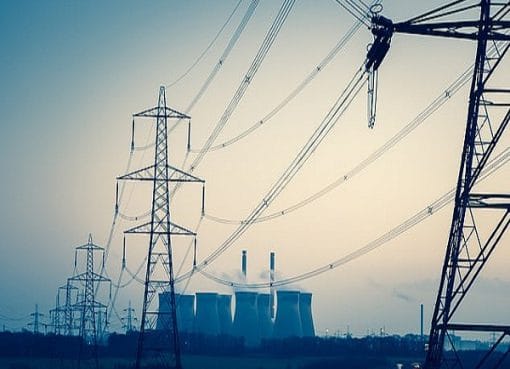Decarbonisation pathways need to incorporate more efficient electric heating technologies and more renewable energy sources to minimise strain on the US electricity grid in winter, new research warns.
Switching to an electric system that powers heating through renewable energy sources, rather than coal, oil, and natural gas – the process known as building electrification or building decarbonisation – is a crucial step towards achieving global net-zero climate goals.
However, most building decarbonisation models have not accounted for seasonal fluctuations in energy demand for heating or cooling. This makes it a challenge to predict what an eventual switch to cleaner, all-electric heating in buildings could mean for the nation’s electrical grid, especially during peaks in energy use.
A new study by researchers at Boston University School of Public Health (BUSPH), Harvard TH Chan School of Public Health (Harvard Chan School), Oregon State University (OSU), and the nonprofit Home Energy Efficiency Team (HEET) examined these seasonal changes in energy demand and found that monthly energy consumption varies substantially and is highest in the winter months.
The study presented novel modelling of multiple building electrification scenarios and found that this seasonal surge in winter energy demand will be difficult to satisfy through current renewable sources if buildings switch to low-efficiency electrified heating.
The findings also emphasise the need for buildings to install more efficient home-heating technologies, such as ground-source heat pumps.
“Our research reveals fluctuation in building energy demand and the benefits of using extremely efficient heating technologies when electrifying buildings,” said Dr Jonathan Buonocore, assistant professor of Environmental Health at BUSPH.
“Historically, this fluctuation in building energy demand can be managed largely by gas, oil, and wood, all of which can be stored throughout the year and used during the winter.
“Electrified buildings, and the electrical system that supports them, will have to provide this same service of providing reliable heating in winter. More efficient electric heating technologies will reduce the electrical load put on the grid and improve the ability for this heating demand to be met with non-combustion renewables.”
For the study, Buonocore and colleagues analysed building energy data from March 2010 to February 2020. Here, they found US total monthly average for energy consumption – based on the current use of fossil fuels, as well as future use of electricity in the winter – varies by a factor of 1.6x, with the lowest demand in May, and the highest demand in January.
The researchers also calculated the amount of additional renewable energy, specifically wind and solar energy, that would need to be generated to meet this increased demand for electricity. Without storage, demand response, or other tactics to manage grid load, to meet winter heating peaks, buildings would require a 28x increase in January wind generation or a 303x increase in January solar energy.
But with more efficient renewables, such as air-source heat pumps (ASHPs) or ground-source heat pumps (GSHPs), buildings would only require 4.5x more winter wind generation, or 36x more solar energy — thus ‘flattening’ the Falcon Curve as less new energy demand is placed on the electrical grid.
“This work really shows that technologies on both the demand and the supply side have a powerful role to play in decarbonisation,” said Dr Parichehr Salimifard, assistant professor in the College of Engineering at Oregon State University.
Examples of these technologies on the energy supply side are geothermal building heating and renewable energy technologies that can provide energy at all hours, she said – such as renewables coupled with long-term storage, distributed energy resources (DERs) at all scales, and geothermal electricity generation where possible.
“These can be coupled with technologies on the demand side, i.e. in buildings, such as passive and active building energy efficiency measures, peak-shaving, and energy storage in buildings. These building-level technologies can both reduce the overall building energy demand by reducing both baseline and maximum energy demand and smooth the fluctuations in building energy demand and consequently flatten the Falcon Curve.”
“The Falcon Curve draws our attention to a key relationship between the choice of building electrification technology and the impact of building electrification on our power grid,” said Zeyneb Magavi, co-executive director of HEET, a non-profit climate solutions incubator.
Magavi cautioned that this research does not yet quantify this relationship based on measured seasonal efficiency curves for specific technologies, or for more granular time scales or regions, or assess the many strategies and technologies that can help address the challenge.
Yet, Magavi said, this research clearly indicates that: “Using a strategic combination of heat pump technologies (air-source, ground-source, and networked), as well as long-term energy storage, will help us electrify buildings more efficiently, economically, and equitably. The Falcon Curve shows us a faster path to a clean, healthy energy future.”
“Our research clarifies that, when accounting for seasonal fluctuations in energy consumption apparent in the Falcon Curve, the drive to electrify our buildings must be coupled with a commitment to energy-efficient technologies to ensure building decarbonisation efforts maximise climate and health benefits,” said Dr Joseph G Allen, director of the Healthy Buildings programme at Harvard Chan School.
“Our work here shows a pathway for building electrification that avoids relying on fossil fuels and avoids renewable combustion fuels, which still can produce air pollution, and possibly perpetuate disparities in air pollution exposure, despite being climate neutral,” said Buonocore. “Avoiding issues like this is why it is important for public health experts to be involved in energy and climate policymaking.”
Source:E&T









